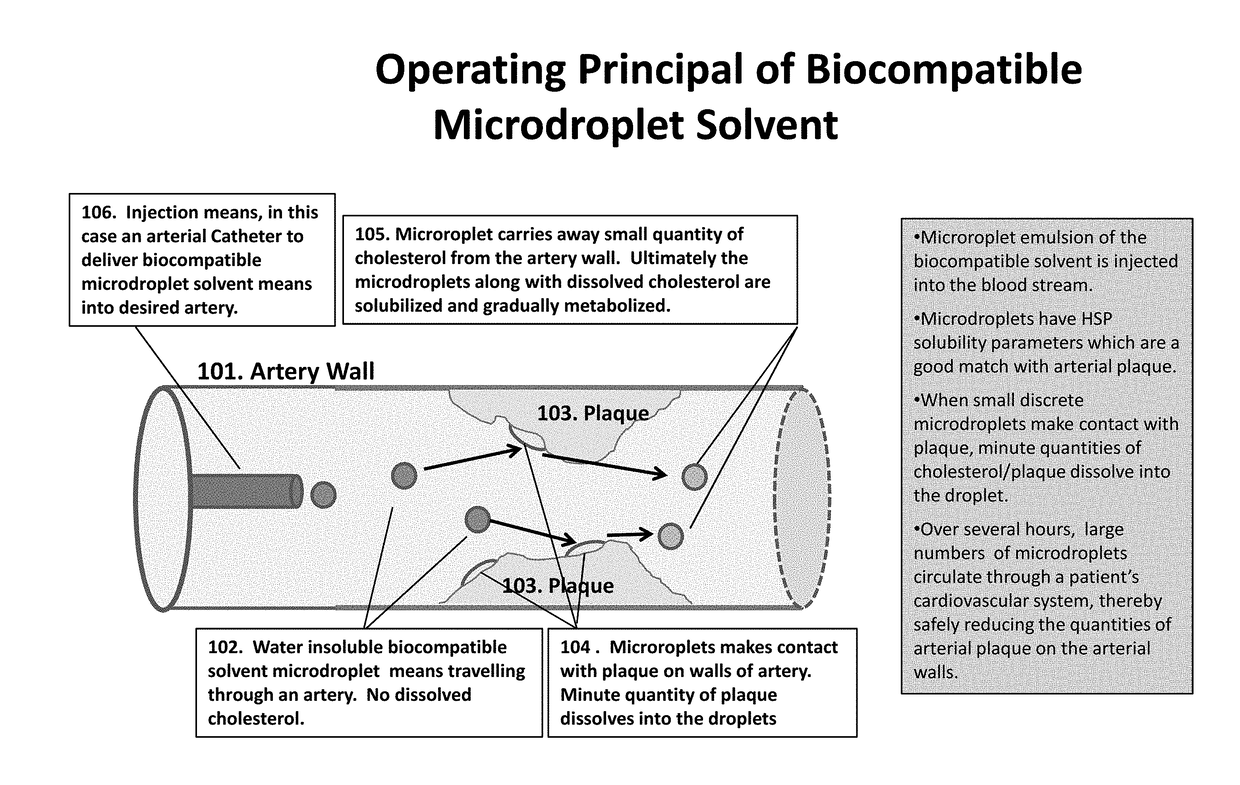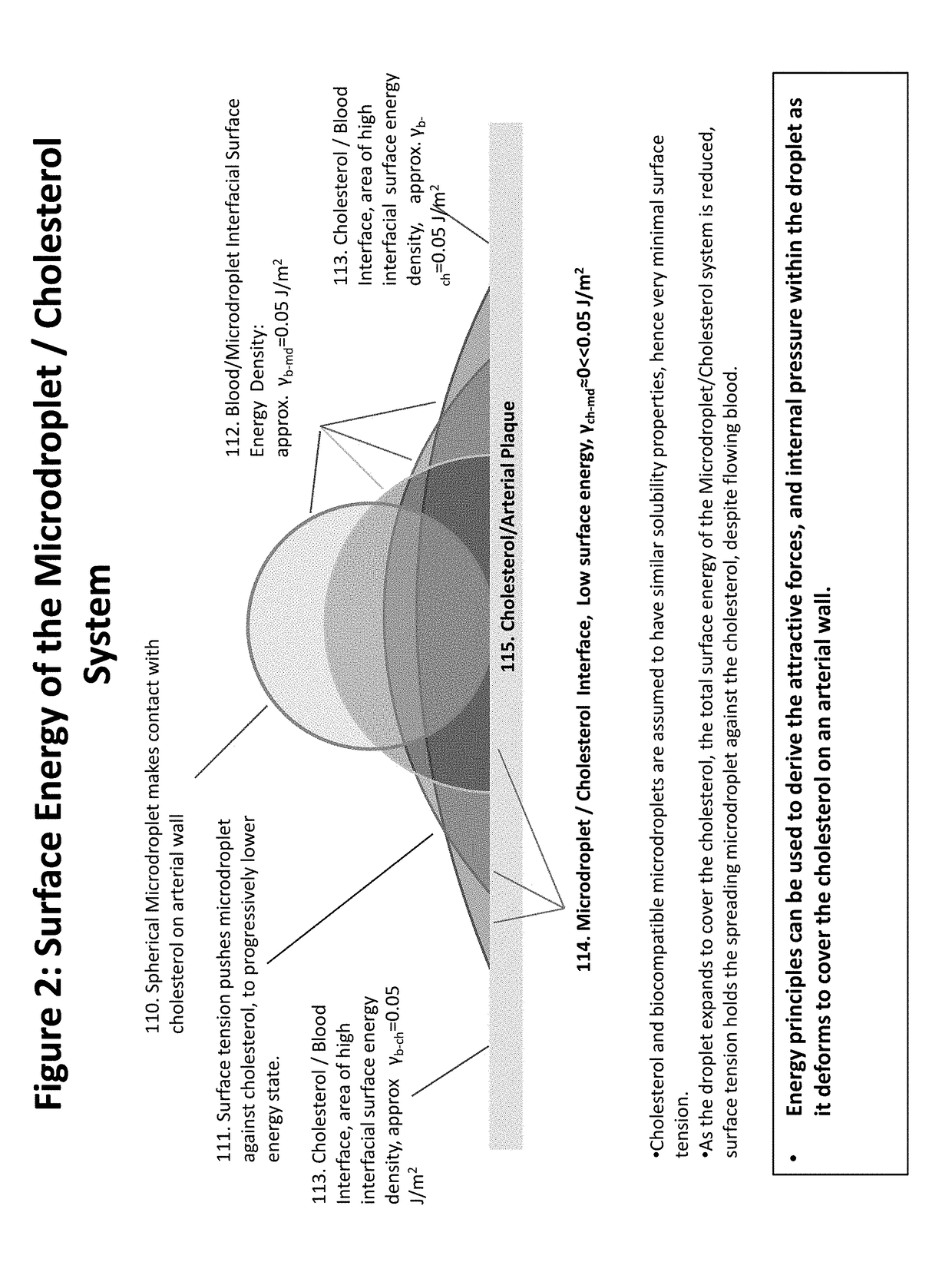Use of biocompatible microdroplets for the treatment of atherosclerosis, heart disease and stroke
a biocompatible, micro-droplet technology, applied in the direction of inorganic non-active ingredients, other medical devices, catheters, etc., can solve the problems of increased risk of hard cholesterol surface exposure to circulating arterial blood, and achieve the effect of reducing the risk of heart disease, stroke, and facilitating the dissolution of arterial plaqu
- Summary
- Abstract
- Description
- Claims
- Application Information
AI Technical Summary
Benefits of technology
Problems solved by technology
Method used
Image
Examples
Embodiment Construction
[0077]FIG. 1 is a pictorial highlighting the underlying principle of the invention. The water insoluble biocompatible solvent microdroplet means 102 are injected into the blood stream by injection means 106 and travel through a patient's arteries 101. In this figure, injection means 106 is placed in an artery, slightly upstream of the arterial plaque being treated. However, given that the microdroplets are small enough to pass unobstructed through capillaries, the injection means 106 could comprise of a simple needle to inject the biocompatible microdroplet solvent emulsion in any perfuse tissue or vein, or could be a venous catheter or an arterial catheter as shown in FIG. 1 or any other device used to inject a fluid intravenously.
[0078]Once the microdroplets of biocompatible solvent enter the cardiovascular system, they will gradually be drawn towards the arterial system, where they will make contact with arterial plaque 103. When they make contact with arterial plaque 103, the mi...
PUM
| Property | Measurement | Unit |
|---|---|---|
| diameter | aaaaa | aaaaa |
| mean diameter | aaaaa | aaaaa |
| mean diameter | aaaaa | aaaaa |
Abstract
Description
Claims
Application Information
 Login to View More
Login to View More - R&D
- Intellectual Property
- Life Sciences
- Materials
- Tech Scout
- Unparalleled Data Quality
- Higher Quality Content
- 60% Fewer Hallucinations
Browse by: Latest US Patents, China's latest patents, Technical Efficacy Thesaurus, Application Domain, Technology Topic, Popular Technical Reports.
© 2025 PatSnap. All rights reserved.Legal|Privacy policy|Modern Slavery Act Transparency Statement|Sitemap|About US| Contact US: help@patsnap.com



